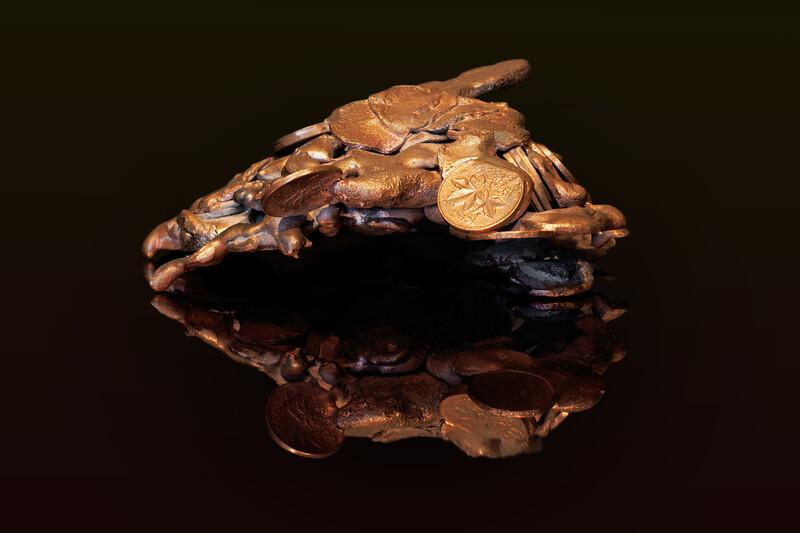
High-grade Copper Anomaly
Tsēmā Igharas' artistic work explores the body and its role as a witness to the ever-changing material and metaphysical landscapes, which are continually impacted, shaken, and consumed by corporate resource extraction. Central to the artist's practice is the engagement and critique of how the value of land and natural resources is determined through Western measures of wealth (social, economic, environmental, power, ownership), and the profound impact of these evaluations on cultural lifeways in the Canadian wilderness, which is still perceived as an untapped frontier for natural resources. Tsēmā's approach is deeply rooted in strategies of Indigenous resistance to neo-colonization, embodied knowledge, and daily acts of decolonization, offering insights into the imagined Canadian "true North" and the industrial reverberations affecting those living downstream.
What sparked Tsēmā's artistic investigations into mining is tracing raw ore extracted from Tahltan territory, that is transported elsewhere for refinement, transformation, use, touch and consumption. In High-Grade Copper Anomalies (formerly known as What Is Left), the artist envisions refining an everyday object, the former Canadian 1 cent coin, down to its core material, evoking multiple layers of meaning: a melted monarch, decommissioned currency, and being made of copper, a material that challenges value in terms of both cultural and industrial significance. Through a material connection, established through the use and touch of everyday objects like money or mobile phones, there exists a connection to mine sites, methods of production, and the repercussions of our thirst for natural resources.

The Blackwood
University of Toronto Mississauga
3359 Mississauga Road
Mississauga, ON L5L 1C6
[email protected]
(905) 828-3789
The galleries are currently closed.
Facebook | Twitter | Instagram
Sign up to receive our newsletter.
The Blackwood is situated on the Territory of the Mississaugas of the Credit, Seneca, and Huron-Wendat.